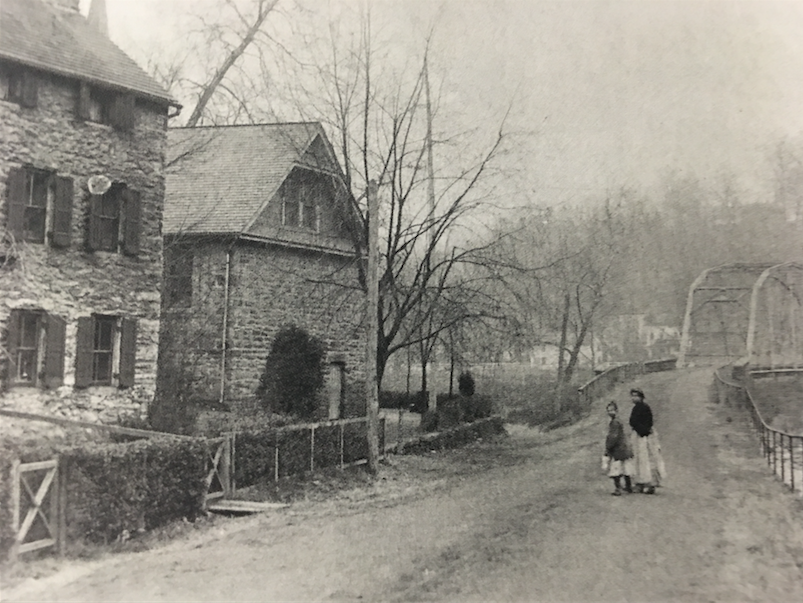
“The only thing left behind was a 55-foot wooden flag pole, a marker that took 25 years to rust and fall apart and disappear, too,” Sally Riley, of the Historical Society of Baltimore County, says of long gone Warren, Maryland. For decades after the town was buried beneath 23 million gallons of Loch Raven Reservoir water, adds Riley, who will be presenting her research on Warren this Sunday at the Historical Society, boaters would look for the lost flagpole and tell stories of the old sunken mill village.
By the late 19th century, Baltimore’s clean drinking water was in short supply. The polluted and sometimes depleted Jones Falls could not fill the needs of city’s growing number citizens so, in 1881, the first Loch Raven dam, the lower dam, was built, forming a reservoir. But it still wasn’t enough to meet demand.
Plans for the massive 2,400-acre Loch Raven Reservoir as we know it today started as Baltimore City Council ordinance 141 in 1908. “GIGANTIC TASK AT HAND” read the headline in The Sun when the project, part of a $5-million water improvement effort, was approved that year. (The reservoir’s name was coined after Luke Raven, one of the first settlers in the area, along with the Scottish word for lake.)
Construction of a new 51-foot upper dam, eventually containing 1.5 billion gallons of water, began in 1914. But it also was a stopgap, failing to meet the demands of the city’s 600,000 residents and expanding industrial base and plans were in the works to build the dam up to its current 240-foot height. The problem, however, was that a thriving mill town sat on the banks of Gunpowder Falls, directly in the hollow just north of the dam.
At the time, Warren was home to cotton, flour, and grist mills, three churches—St. Paul’s Protestant Church, Warren Methodist Episcopal Church, and Warren Baptist Church—a public school, general store, post office, and more than 900 residents.
After the project was approved, it was learned that city officials had been quietly—or secretly, some say—in negotiations with Warren Manufacturing Co. to buyout the mills and the town, in order to level them. In 1922, after several years of legal haggling, the citizens were given the boot, the mills and town dismantled, and eventually the whole of Warren disappeared under 23 billion gallons of Gunpowder water.
Today, the only intact remains of the town are four bungalows—residences of company management at the time—that were relocated out of harm’s way to Old Bosley Road. Otherwise, there are only a handful telltale remnants of Warren gravestones and stone fences around the reservoir’s edges.
Fortunately, the city water department, for reasons still unknown, sent photographers to document life in Warren in a series of gorgeous, if depressing, pictures (more than 70 are included in Riley’s presentation) before the town was dismembered. The black and white photos show girls walking across the original Gunpowder bridge, the company story and men gathered on a porch across the street, company houses on Main Street, and children playing in the schoolyard near the lost flag pole.
Riley adds that she occasionally still meets people, like local writer Ann Kolakowski, who will tell her that their grandparents, or great-grandparents grew up in Warren.
“My grandmother lived to be almost 104 and when she was 99, when my brother and I were clearing out her house—she was moving to an assisted living facility—and I came across an old school notebook that read: Marian Brown, Domestic Science/Warren School, Maryland. I was like, ‘What the hell is Warren School?’” says Kolakowski, who published Persistence: Poems of Warren, Maryland in 2014, inspired by the town and her family’s story.
Kolakowski then recalled that as a child she used to go fishing with her family in a section of the reservoir they referred to Schoolhouse Cove. “I can remember my parents asking me to look for the flagpole there, but I never knew why.”
Warren actually reminds Riley of Sparrows Point, the old Bethlehem Steel company town, where my grandparents lived when she was growing up. “One of my favorite childhood memories was driving there for Sunday dinner with my parents,” she recalls. “There were a lot of kids who lived in Sparrows Point then and it was wonderful. I loved their old house. Of course, that’s gone, too. Another ghost town, I suppose.”
Editor’s Note: This story is from the collection, If You Love Baltimore, It Will Love You Back: 171 Short But True Stories from Senior Editor Ron Cassie, due out Oct. 1 from Apprentice House Press at Loyola University Maryland To support local stores, it can be also pre-ordered through bookshop.org.
